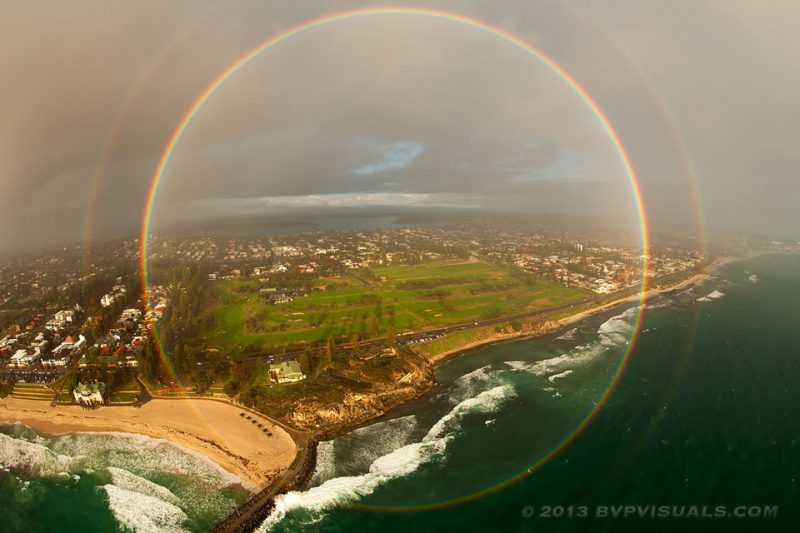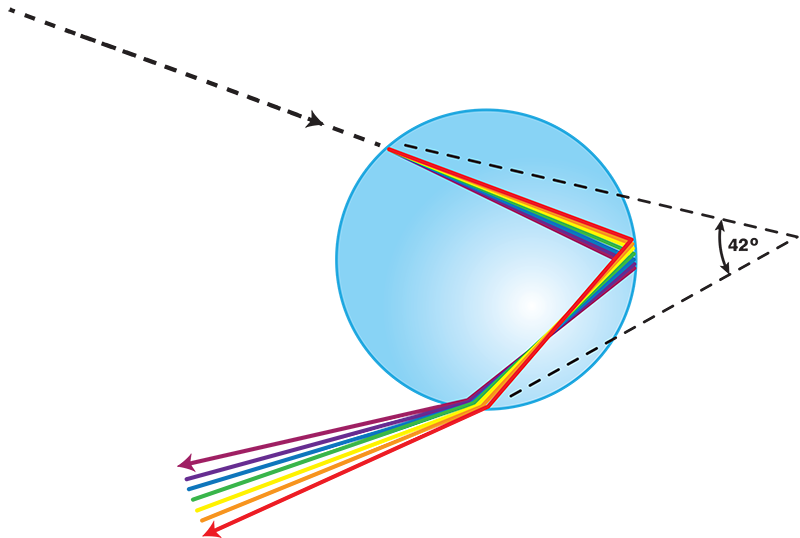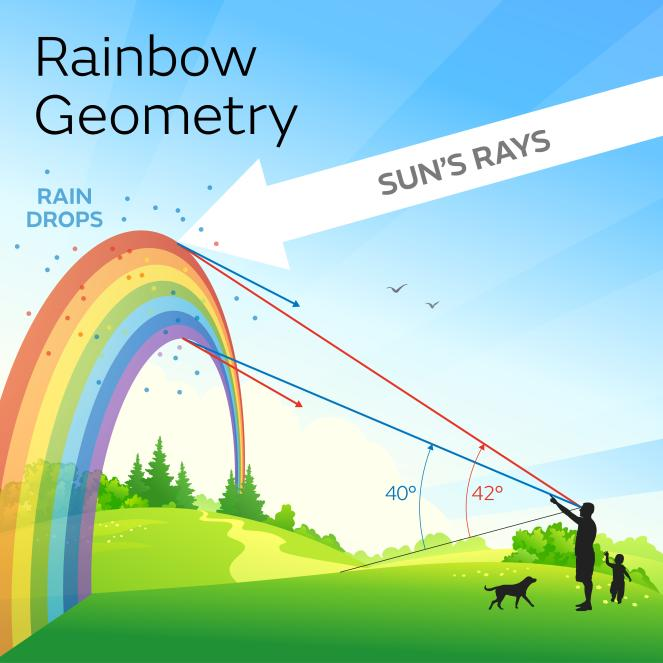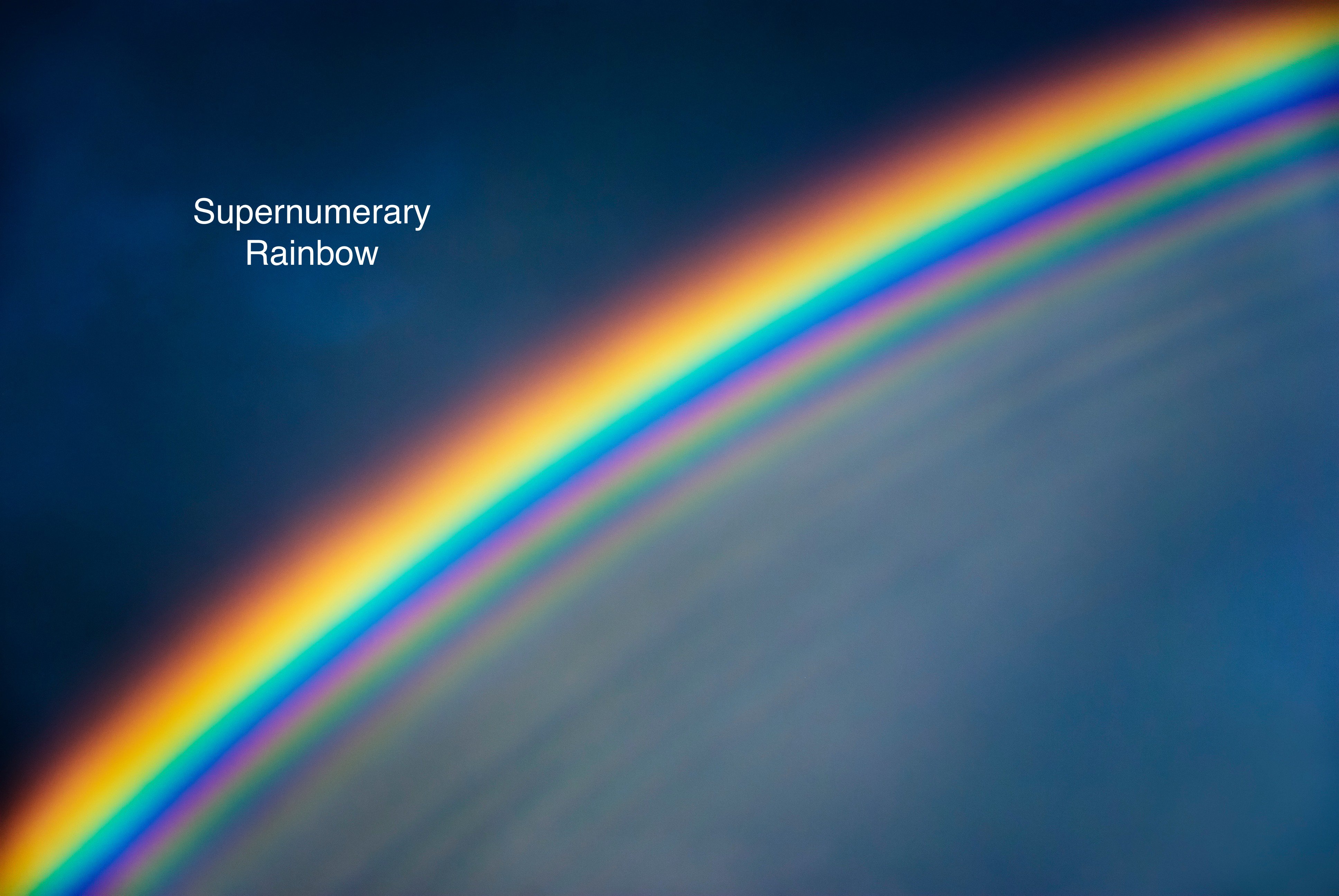Rainbow

At the end of the rainbow, you will find true meaning of life.
Have you ever wondered what brings the combination of colours to the sky when the sun shines after the rainfall? Let’s talk about one of the most stunning natural phenomenon: rainbow!
Part 1: Formation
Have you ever wondered how a rainbow is formed? Why do we always see it only after the rain? Why do we only see an arc of the rainbow?
First of all, a rainbow’s shape is not actually an arc, but instead a full circle. We always see an arc because we only see the upper half of the rainbow at certain angle, and the lower half is hidden below the horizon when we are standing on the ground. If you’re on a plane, at the right angle, you can see a full circle rainbow!
Now how does it form? It is again, a natural phenomenon of light. When there are droplets of water in the air (especially after the rain), sunlight from behind you enters the droplet and get refracted twice, and reflected back to your eyes. Refraction of light causes the bending of light and each of the wavelength(colors) of the light is bent at a different rate, causing the wavelength to be separated when the light exits the droplet.
The rainbow you see is unique to you, because the spectrum of colors will only be visible to you from a very specific angle relative to where you are (approx 40° ~ 42°). That’s why when you move forward, the rainbow seems to recede away from you, and the rainbow is simply coming out from a different raindrop.
Images




Part 2: Colour
ROYGBIV..?
Have you ever wondered what is the true colour of a rainbow? We all know it composed of 7 colours: red, orange, yellow, green, blue, indigo, violet, or ROYGBIV for short. We can recreate rainbow light by using a glass prism at the right angle. As white light move through the prism, different colours of the light bend different amounts (refraction), it spreads out into a rainbow.. but look closely. (pic)
The rainbow colour it produces is not quite ROYGBIV, like where is the violet light? And there is some “light blue” colour between blue and green, or what we call cyan, why isn’t this colour in ROYGBIV? That brings is back the origin of ROYGBIV, when Sir Isaac Newton did an experiment with light and labelled the colour observed ROYGBIV. The thing he called “Blue” was indeed what we would now call cyan, and what we now tend to call blue, Newton called it “Violet”, as in roses are red, violets are blue.
Purple, magenta or pink as we know today don’t occur in the rainbow from a prism because they can only be formed as a combination of red and blue light, which, are in opposite sides of the rainbow, nowhere near overlapping, so there are no purple or pink in the rainbow. Violets are there, but is actually now what we call blue. But here’s the thing, sometimes we do see purple (and/or pink) in the rainbows in the sky. Why is that?
In part 1, we know rainbow is really a round disk. Because light is a wave, interference occurs within the raindrops as the light refract, causing it to produce multiple rings, the outermost rings (brightest) is the primary ring, while the rest is called supernumerary rings (ring within ring) or supernumerary rainbow. At the right size of the raindrop, the first red supernumerary ring overlaps with the blue/violet primary ring, so red + violet gives us purple!
Roses are red, violets are blue, and purple is just a supernumerary hue.Fun Facts
Newton added the colour “Indigo” for his “fundamental 7 colours of the rainbow” just to match the number of notes in the muscial scale "do re mi fa so la ti"
Images


Part 3: Rainbow Variations
Coming soon…
Keywords
-
Horizon: The line at which the earth’s surface and the sky appear to meet.
-
Refraction: Refraction is the bending of light (it also happens with sound, water and other waves) as it passes from one transparent substance into another. This bending by refraction makes it possible for us to have lenses, magnifying glasses, prisms and rainbows.
-
Reflection: Reflection is when light bounces off an object. If the surface is smooth and shiny, like glass, water or polished metal, the light will reflect at the same angle as it hit the surface. For a smooth surface, reflected light rays travel in the same direction.
-
Isaac Newton: Sir Isaac Newton PRS was an English mathematician, physicist, astronomer, theologian, and author widely recognised as one of the greatest mathematicians and physicists of all time and among the most influential scientists. Sir Isaac Newton PRS was an English mathematician, physicist, astronomer, theologian, and author widely recognised as one of the greatest mathematicians and physicists of all time and among the most influential scientists.
-
Interference: Interference of light is a common phenomenon that can be explained classically by the superposition or overlapping of the light waves.
References
Part 1
https://www.nationalgeographic.org/encyclopedia/rainbow/
https://www.youtube.com/watch?v=5cVX3eq6NUQ
https://www.sciencelearn.org.nz/resources/49-refraction-of-light
https://www.sciencelearn.org.nz/resources/48-reflection-of-light
Part 2
https://en.wikipedia.org/wiki/Isaac_Newton
https://en.wikipedia.org/wiki/Wave_interference
https://www.youtube.com/watch?v=9udYi7exojk